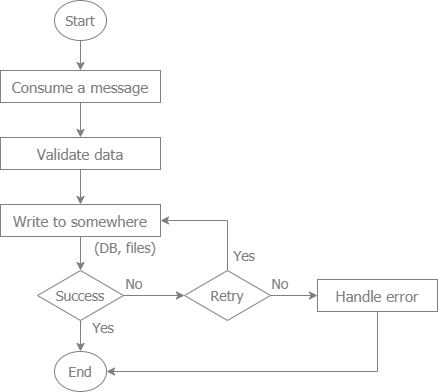NATS is an open-source, lightweight, and high-performance messaging system designed for cloud-native applications, IoT messaging, and microservices architectures. It supports multiple messaging patterns, including publish/subscribe, request/reply, and queuing. Key features include:
- Simplicity: Easy to set up and use with minimal configuration.
- Performance: Low latency and high throughput.
- Scalability: Capable of handling millions of messages per second.
- Fault Tolerance: Supports clustering for high availability.
- GO: NATS, to wrap and simplify nats.go. Example is at go-nats-sample
- nodejs: nats-plus, to wrap and simplify nats. Example is at nats-sample
- The libraries to implement this flow are:
- mq for GOLANG. Example is at go-nats-sample
- mq-one for nodejs. Example is at nats-sample
- Scenario: Facilitating communication between microservices in a distributed system.
- Benefit: Provides low-latency, reliable messaging, ensuring efficient inter-service communication.
- Scenario: Enabling real-time transactions and data updates.
- Benefit: Provides reliable and fast message delivery critical for financial applications.
- Scenario: Streaming data in real-time from various sources to data processing systems.
- Benefit: Low latency ensures real-time data processing and analytics.
- Scenario: Building applications based on event-driven paradigms.
- Benefit: Decouples services, allowing for scalable and maintainable architectures.
- Scenario: Handling communication between numerous IoT devices.
- Benefit: Supports lightweight, scalable messaging suitable for IoT environments.
- Scenario: Managing communication between edge devices and cloud services.
- Benefit: Efficiently handles data transfer and command execution with minimal latency.
- Type: Lightweight, high-performance messaging system.
- Use Cases: Microservices communication, IoT messaging, real-time data streaming.
- Delivery Guarantees: At-most-once (standard), at-least-once with JetStream.
- Persistence: Optional (JetStream for persistence).
- Latency: Very low, optimized for speed.
- Scalability: Highly scalable with clustering.
- Type: Distributed event streaming platform.
- Use Cases: High-throughput messaging, event sourcing, log aggregation.
- Delivery Guarantees: Configurable (at-least-once, exactly-once).
- Persistence: Durable storage with configurable retention.
- Latency: Higher due to disk persistence.
- Scalability: Highly scalable with partitioned topics.
- Type: Message broker.
- Use Cases: Decoupling applications, job queuing, asynchronous communication.
- Delivery Guarantees: At-least-once, exactly-once (with transactions).
- Persistence: Persistent storage of messages.
- Latency: Moderate, designed for reliability.
- Scalability: Scalable with clustering and federation.
- Latency and Performance: NATS offers the lowest latency, Kafka provides high throughput with persistence, RabbitMQ balances reliability and performance.
- Persistence: Kafka and RabbitMQ offer strong persistence guarantees, while NATS focuses on speed with optional persistence.
- Scalability: All three are scalable, but Kafka excels in handling high-throughput event streams, NATS in low-latency scenarios, and RabbitMQ in reliable message delivery.
- NATS: Best for real-time, low-latency communication in microservices and IoT.
- Kafka: Ideal for high-throughput event streaming and log aggregation.
- RabbitMQ: Suitable for reliable message queuing and asynchronous task processing.
Please make sure to initialize a Go module before installing core-go/nats:
go get -u github.com/core-go/natsImport:
import "github.com/core-go/nats"

